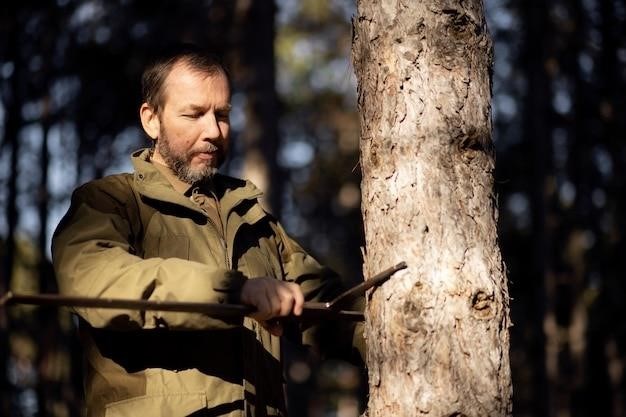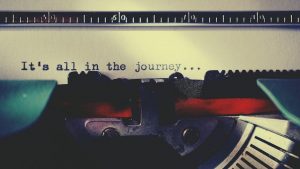
The Value of Old Sewing Machine Manuals
Old sewing machine manuals are more than just dusty relics of a bygone era. They hold a wealth of information that can be incredibly valuable for collectors, enthusiasts, and even those who simply want to keep their vintage machines running smoothly.
A Historical Perspective
Old sewing machine manuals offer a fascinating glimpse into the evolution of sewing technology. They document the design features, operating instructions, and troubleshooting tips for machines produced over decades, capturing the ingenuity and craftsmanship of a bygone era. These manuals often include detailed illustrations, showcasing the intricate mechanics and construction of these machines, providing valuable insights into the technological advancements that shaped the sewing industry. From the early treadle machines to the first electric models, old sewing machine manuals serve as a historical record of the innovation and artistry that went into creating these essential tools.
Importance for Repair and Maintenance
Old sewing machine manuals are invaluable resources for anyone seeking to repair or maintain vintage machines. They provide detailed diagrams, step-by-step instructions, and troubleshooting guides that can help identify and resolve common problems. From adjusting tension to replacing parts, these manuals offer essential information that can help keep these machines running smoothly for years to come. For collectors and enthusiasts, these manuals are essential tools for preserving the historical integrity and functionality of their prized possessions. They can also be a valuable resource for finding replacement parts, as many vintage sewing machine models are no longer in production.
Preserving Sewing Machine History
Old sewing machine manuals play a vital role in preserving the rich history of these remarkable machines. They offer a window into the evolution of sewing technology, showcasing how machines have changed over time and the innovations that have shaped the industry. These manuals often contain fascinating details about the design, construction, and operation of specific models, shedding light on the craftsmanship and ingenuity of the era in which they were created. Moreover, they provide valuable insights into the social and cultural context of sewing, reflecting the changing needs and aspirations of society throughout history. By preserving these manuals, we can ensure that future generations have access to this important historical record.
Finding Old Sewing Machine Manuals
Finding old sewing machine manuals can be a rewarding quest, leading you to a treasure trove of knowledge and history.
Online Resources
The internet has become a treasure trove for vintage sewing machine enthusiasts, offering a wealth of resources for finding manuals. Numerous websites and forums dedicated to sewing, vintage machines, and collecting offer downloadable manuals, often for free. These online platforms often have dedicated sections for sharing and exchanging manuals, allowing collectors to access a vast library of information. While some websites may require registration or membership, the convenience and accessibility of online resources make them a great starting point for your search.
Specialized Websites and Forums
Beyond general sewing and vintage machine websites, there are dedicated online communities and forums specifically catering to collectors and enthusiasts of antique sewing machines. These platforms often have sections dedicated to manuals, where members share scans, PDF files, and even hard copies of rare manuals. The expertise and knowledge within these communities are invaluable for locating obscure or out-of-print manuals, making them a valuable resource for serious collectors. Engaging with these online communities can also provide valuable insights into specific machine models, their history, and restoration techniques.
Antique and Vintage Sewing Machine Dealers
Antique and vintage sewing machine dealers are often a treasure trove of information, including manuals. Many dealers specialize in specific brands or eras, accumulating extensive knowledge and resources related to their inventory. They may have original manuals for sale alongside their machines, or they might be able to direct you to other sources, including online retailers, collectors, or even local libraries. Even if they don’t have the exact manual you need, their expertise in vintage machines can prove invaluable in your search.

Types of Old Sewing Machine Manuals
Old sewing machine manuals come in a variety of formats, each providing a unique set of information.
Instruction Manuals
Instruction manuals are the most common type of old sewing machine manual. They typically provide detailed instructions on how to use the machine, including setting up the machine, threading the needle, adjusting the stitch length, and using different sewing techniques. Instruction manuals often feature diagrams and illustrations, which can be very helpful for understanding how the machine works. These manuals are invaluable for learning how to operate vintage machines, especially those with unique features or complex mechanisms.
Service Manuals
Service manuals are essential for anyone who wants to repair or maintain their old sewing machine. These manuals provide detailed information on the machine’s internal workings, including diagrams of the parts, troubleshooting guides, and step-by-step instructions for common repairs. They often include information on adjusting timing, replacing parts, and identifying potential problems. Service manuals are invaluable for keeping vintage sewing machines in good working order and preserving their longevity.
Parts Lists
Parts lists are crucial for identifying and ordering replacement parts for old sewing machines. They provide a comprehensive catalog of every component within the machine, including their names, numbers, and sometimes even diagrams. This information is essential for sourcing specific parts, especially for vintage models where parts may be difficult to find. Parts lists can also be helpful for understanding the machine’s construction and identifying potential wear and tear issues.

Tips for Using Old Sewing Machine Manuals
Old sewing machine manuals can be a valuable resource for anyone who owns or wants to learn about vintage machines.
Understanding Terminology and Illustrations
One of the first challenges you might encounter when using an old sewing machine manual is understanding the terminology and illustrations. Sewing technology has evolved over time, and some terms and concepts may be unfamiliar. For example, a manual from the 1950s might refer to a “bobbin winder” that would be called a “bobbin winder” in a modern manual. Illustrations can also be challenging, as they often lack the detail found in modern manuals. Take your time, study the diagrams, and don’t hesitate to consult online resources for clarification. Remember, patience and perseverance are key to deciphering the secrets of old sewing machine manuals.
Identifying Your Machine Model
Before diving into the intricacies of an old sewing machine manual, it’s crucial to correctly identify your machine model. This is often a vital step in finding the right manual, as different models can have significant variations in their features, operation, and maintenance. Look for a model number or serial number on the machine itself, usually located on the base or under the bed plate. A quick online search using this information can help you pinpoint the specific manual you need. If you’re unsure, a vintage sewing machine dealer or collector’s forum can provide assistance in identifying your machine.
Troubleshooting Common Problems
Old sewing machines, like any vintage machinery, are susceptible to occasional hiccups. This is where old sewing machine manuals truly shine. They offer a wealth of troubleshooting tips and solutions for common problems, such as skipped stitches, thread jams, or needle breakage. These manuals can guide you through identifying the cause of the problem, often with detailed illustrations that clarify each step. From adjusting tension settings to cleaning and lubricating specific parts, these manuals provide a comprehensive resource for keeping your vintage machine running smoothly.
The Future of Old Sewing Machine Manuals
The future of old sewing machine manuals looks bright, with digitalization efforts ensuring their preservation and accessibility for generations to come.
Digitalization and Preservation
The rise of digital technology offers a promising path for preserving the legacy of old sewing machine manuals. By scanning and digitizing these manuals, they can be made accessible to a wider audience, ensuring their survival for future generations. This process not only protects these historical documents from physical deterioration but also allows for easy sharing and distribution online. Websites like the International Sewing Machine Collectors Society (ISMACS) have embraced this approach, offering free downloadable manuals for various vintage machines, including iconic models like the Singer Featherweight and White Rotaries. This digital revolution is helping to keep the knowledge and history contained within these manuals alive and readily available for those who seek it.
The Role of Collectors and Enthusiasts
Collectors and enthusiasts play a vital role in preserving the legacy of old sewing machine manuals. Their passion for these historical artifacts drives them to seek out rare and often obscure manuals, ensuring that these valuable resources are not lost to time. Individuals like Teena Lee Sorrel, a dedicated collector, have amassed impressive collections of vintage manuals, often going to great lengths to find out-of-print and forgotten publications. These collectors often share their knowledge and resources with the broader community, creating online forums and websites where enthusiasts can connect, exchange information, and even find manuals for their own vintage machines. This collective effort helps to ensure that the knowledge and history contained within these manuals remain accessible and cherished.
Continuing the Legacy of Sewing
Old sewing machine manuals are not just historical artifacts; they are also practical tools that help to keep the art of sewing alive. By providing detailed instructions and diagrams, these manuals offer a window into the techniques and practices of past generations of seamstresses and tailors. Whether it’s mastering the intricacies of a vintage machine or simply understanding the basic principles of sewing, these manuals provide a valuable resource for anyone interested in learning or refining their skills. In an age of mass-produced clothing, the availability of these manuals helps to preserve the tradition of hand-crafted garments and encourages a greater appreciation for the timeless art of sewing.





No comment yet, add your voice below!